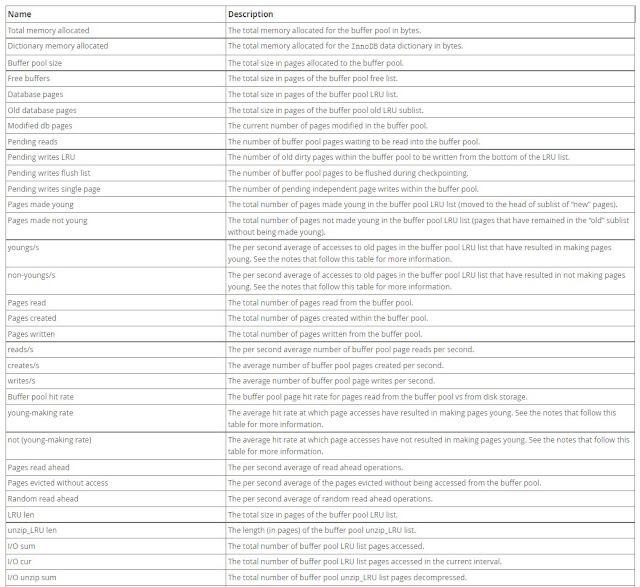InnoDB is a multi-versioned storage engine: it keeps information about old versions of changed rows, to support transactional features such as concurrency and rollback. This information is stored in the tablespace in a data structure called a rollback segment (after an analogous data structure in Oracle). InnoDB uses the information in the rollback segment to perform the undo operations needed in a transaction rollback. It also uses the information to build earlier versions of a row for a consistent read.
Internally, InnoDB adds three fields to each row stored in the database. A 6-byte DB_TRX_ID field indicates the transaction identifier for the last transaction that inserted or updated the row. Also, a deletion is treated internally as an update where a special bit in the row is set to mark it as deleted. Each row also contains a 7-byte DB_ROLL_PTR field called the roll pointer. The roll pointer points to an undo log record written to the rollback segment. If the row was updated, the undo log record contains the information necessary to rebuild the content of the row before it was updated. A 6-byte DB_ROW_ID field contains a row ID that increases monotonically as new rows are inserted. If InnoDB generates a clustered index automatically, the index contains row ID values. Otherwise, the DB_ROW_ID column does not appear in any index.
Undo logs in the rollback segment are divided into insert and update undo logs. Insert undo logs are needed only in transaction rollback and can be discarded as soon as the transaction commits. Update undo logs are used also in consistent reads, but they can be discarded only after there is no transaction present for which InnoDB has assigned a snapshot that in a consistent read could need the information in the update undo log to build an earlier version of a database row.
Commit your transactions regularly, including those transactions that issue only consistent reads. Otherwise, InnoDB cannot discard data from the update undo logs, and the rollback segment may grow too big, filling up your tablespace.
The physical size of an undo log record in the rollback segment is typically smaller than the corresponding inserted or updated row. You can use this information to calculate the space needed for your rollback segment.
In the InnoDB multi-versioning scheme, a row is not physically removed from the database immediately when you delete it with an SQL statement. InnoDB only physically removes the corresponding row and its index records when it discards the update undo log record written for the deletion. This removal operation is called a purge, and it is quite fast, usually taking the same order of time as the SQL statement that did the deletion.
If you insert and delete rows in smallish batches at about the same rate in the table, the purge thread can start to lag behind and the table can grow bigger and bigger because of all the “dead” rows, making everything disk-bound and very slow. In such a case, throttle new row operations, and allocate more resources to the purge thread by tuning the innodb_max_purge_lag system variable. See Section 15.13, “InnoDB Startup Options and System Variables” for more information.
InnoDB multiversion concurrency control (MVCC) treats secondary indexes differently than clustered indexes. Records in a clustered index are updated in-place, and their hidden system columns point undo log entries from which earlier versions of records can be reconstructed. Unlike clustered index records, secondary index records do not contain hidden system columns nor are they updated in-place.
When a secondary index column is updated, old secondary index records are delete-marked, new records are inserted, and delete-marked records are eventually purged. When a secondary index record is delete-marked or the secondary index page is updated by a newer transaction, InnoDB looks up the database record in the clustered index. In the clustered index, the record's DB_TRX_ID is checked, and the correct version of the record is retrieved from the undo log if the record was modified after the reading transaction was initiated.
If a secondary index record is marked for deletion or the secondary index page is updated by a newer transaction, the covering index technique is not used. Instead of returning values from the index structure, InnoDB looks up the record in the clustered index.
However, if the index condition pushdown (ICP) optimization is enabled, and parts of the WHERE condition can be evaluated using only fields from the index, the MySQL server still pushes this part of the WHERE condition down to the storage engine where it is evaluated using the index. If no matching records are found, the clustered index lookup is avoided. If matching records are found, even among delete-marked records, InnoDB looks up the record in the clustered index.


